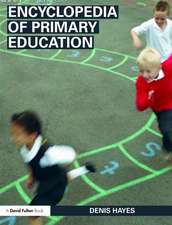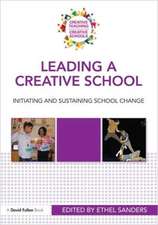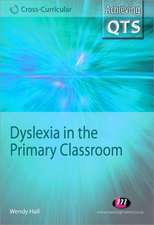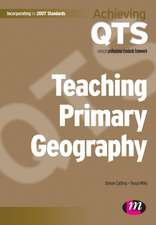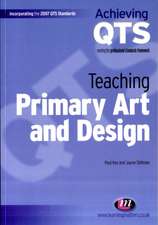The Common Core Companion: Booster Lessons, Grades 3-5: Elevating Instruction Day by Day: Corwin Literacy
Autor Leslie A. Blaumanen Limba Engleză Spirală – 26 oct 2015
Din seria Corwin Literacy
-
 Preț: 285.18 lei
Preț: 285.18 lei -
 Preț: 158.08 lei
Preț: 158.08 lei -
 Preț: 278.41 lei
Preț: 278.41 lei -
 Preț: 243.82 lei
Preț: 243.82 lei -
 Preț: 244.25 lei
Preț: 244.25 lei -
 Preț: 88.42 lei
Preț: 88.42 lei -
 Preț: 273.64 lei
Preț: 273.64 lei -
 Preț: 274.70 lei
Preț: 274.70 lei -
 Preț: 200.92 lei
Preț: 200.92 lei -
 Preț: 248.27 lei
Preț: 248.27 lei -
 Preț: 294.79 lei
Preț: 294.79 lei -
 Preț: 281.36 lei
Preț: 281.36 lei -
![Mindsets and Moves: Strategies That Help Readers Take Charge [Grades K-8]](https://i3.books-express.ro/bs/9781506314938/mindsets-and-moves.jpg) Preț: 156.17 lei
Preț: 156.17 lei -
 Preț: 283.27 lei
Preț: 283.27 lei -
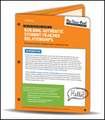 Preț: 88.42 lei
Preț: 88.42 lei -
 Preț: 281.95 lei
Preț: 281.95 lei -
 Preț: 248.27 lei
Preț: 248.27 lei -
 Preț: 278.66 lei
Preț: 278.66 lei -
 Preț: 276.91 lei
Preț: 276.91 lei -
 Preț: 237.15 lei
Preț: 237.15 lei -
 Preț: 270.76 lei
Preț: 270.76 lei -
![Comprehension [Grades K-12]: The Skill, Will, and Thrill of Reading](https://i3.books-express.ro/bs/9781071812839/comprehension-grades-k-12.jpg) Preț: 287.79 lei
Preț: 287.79 lei -
 Preț: 278.11 lei
Preț: 278.11 lei -
 Preț: 245.45 lei
Preț: 245.45 lei -
 Preț: 204.27 lei
Preț: 204.27 lei -
 Preț: 272.62 lei
Preț: 272.62 lei -
![Every Minute Matters [Grades K-5]: 40+ Activities for Literacy-Rich Classroom Transitions](https://i4.books-express.ro/bs/9781544382449/every-minute-matters-grades-k-5.jpg) Preț: 193.61 lei
Preț: 193.61 lei -
 Preț: 274.00 lei
Preț: 274.00 lei -
![Flash Feedback [Grades 6-12]: Responding to Student Writing Better and Faster – Without Burning Out](https://i4.books-express.ro/bs/9781544360492/flash-feedback-grades-6-12.jpg) Preț: 232.71 lei
Preț: 232.71 lei -
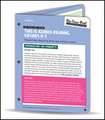 Preț: 88.67 lei
Preț: 88.67 lei -
 Preț: 147.92 lei
Preț: 147.92 lei -
 Preț: 273.44 lei
Preț: 273.44 lei -
 Preț: 245.73 lei
Preț: 245.73 lei -
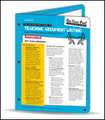 Preț: 88.67 lei
Preț: 88.67 lei -
 Preț: 236.13 lei
Preț: 236.13 lei -
 Preț: 209.16 lei
Preț: 209.16 lei -
 Preț: 256.83 lei
Preț: 256.83 lei -
 Preț: 291.05 lei
Preț: 291.05 lei -
 Preț: 288.67 lei
Preț: 288.67 lei -
 Preț: 273.44 lei
Preț: 273.44 lei -
 Preț: 278.11 lei
Preț: 278.11 lei -
 Preț: 244.08 lei
Preț: 244.08 lei -
 Preț: 244.45 lei
Preț: 244.45 lei -
![Mentor Texts That Multitask [Grades K-8]: A Less-Is-More Approach to Integrated Literacy Instruction](https://i3.books-express.ro/bs/9781071836132/mentor-texts-that-multitask-grades-k-8.jpg) Preț: 241.23 lei
Preț: 241.23 lei -
 Preț: 140.62 lei
Preț: 140.62 lei -
 Preț: 216.22 lei
Preț: 216.22 lei -
 Preț: 218.84 lei
Preț: 218.84 lei -
 Preț: 289.03 lei
Preț: 289.03 lei -
 Preț: 273.44 lei
Preț: 273.44 lei
Preț: 284.26 lei
Nou
Puncte Express: 426
Preț estimativ în valută:
54.40€ • 56.58$ • 44.91£
54.40€ • 56.58$ • 44.91£
Carte disponibilă
Livrare economică 22 martie-05 aprilie
Preluare comenzi: 021 569.72.76
Specificații
ISBN-13: 9781483392745
ISBN-10: 1483392740
Pagini: 280
Dimensiuni: 216 x 279 x 23 mm
Greutate: 0.79 kg
Ediția:1
Editura: SAGE Publications
Colecția Corwin
Seria Corwin Literacy
Locul publicării:Thousand Oaks, United States
ISBN-10: 1483392740
Pagini: 280
Dimensiuni: 216 x 279 x 23 mm
Greutate: 0.79 kg
Ediția:1
Editura: SAGE Publications
Colecția Corwin
Seria Corwin Literacy
Locul publicării:Thousand Oaks, United States
Cuprins
Introduction
LESSON SEQUENCE 1: Integrating Opinion Writing With Evaluating Argument
What Teachers Guide Across the Week
What Students Do Across the Week
Booster Reading Lesson 1: Understanding Point of View
Adapting This Lesson for Other Text Types: Informational
Companion Writing Lesson 1: Launching Opinion and Persuasive Writing
Snapshot of a Turn-and-Talk Peer Conference on POV
Booster Reading Lesson 2: Co-Constructing and Close Reading
Companion Writing Lesson 2: Determine Structure and Essential Elements
Language Connections: Formal Versus Informal English
Booster Reading Lesson 3: Reading and Annotating Fairy Tales
Companion Writing Lesson 3: Planning and Drafting
Booster Reading Lesson 4: Compare/Contrast Writing
Companion Writing Lesson 4: Revision Focus on Transition Words
Booster Reading Lesson 5: Complete Compare/Contrast Piece
Companion Writing Lesson 5: Edit and Finalize Piece
Third-Grade Adaptation
Fifth-Grade Adaptation
NEXT INSTRUCTIONAL STEPS
What Do I See? A Student Sample of Persuasive Writing
What Do I See? A Student Sample of Compare and Contrast
Authentic Assessment: Student Reflection and Evaluation
Peer Power: How to Use Student Work as Mentor Texts
If/Then Chart
Mentor Texts
Unit Planning: How to Build Out Three Weeks
LESSON SEQUENCE 2: Integrating Reading Craft and Structure With Opinion Writing
What Teachers Guide Across the Week
What Students Do Across the Week
Booster Reading Lesson 1: Explaining How an Author Uses Reasons and Evidence in Informational Text
Companion Writing Lesson 1: Expressing an Opinion in Response to Text
Booster Reading Lesson 2: Examining How Text Features Help With Main Idea and Evidence
Companion Writing Lesson 2: Modeling Opinion Writing
Language Connections: Determine or Clarify the Meaning of Unknown Words
Booster Reading Lesson 3: Using Essential Questions to Dig Deeper
Companion Writing Lesson 3: Launching Opinion Writing
Booster Reading Lesson 4: Moving to Independence
Companion Writing Lesson 4: Working Through the Writing Process
Booster Reading Lesson 5: Assessing Our Learning
Companion Writing Lesson 5: Wrapping Up the Writing
Snapshot of How to Move From a Written Opinion Piece to a Speech
Third-Grade Adaptation
Fourth-Grade Adaptation
NEXT INSTRUCTIONAL STEPS
What Do I See? A Student Sample of Response to Reading
What Do I See? A Student Sample of Response to Reading
Authentic Assessment: Student Reflection and Evaluation
Peer Power: How to Use Student Work as Mentor Texts
If/Then Chart
Mentor Texts
Unit Planning: How to Build Out Three Weeks
LESSON SEQUENCE 3: Integrating Narrative Writing With Craft and Structure
What Teachers Guide Across the Week
What Students Do Across the Week
Booster Reading Lesson 1: Elements of Myths
Companion Writing Lesson 1: Starting to Envision an Original Myth
Adapting This Lesson for Other Text Types: Informational
Booster Reading Lesson 2: Co-Constructing a Summary and Independent Reading
Companion Writing Lesson 2: Planning a Myth
Booster Reading Lesson 3: Mini-Book Clubs
Companion Writing Lesson 3: Adding Character Description and Dialogue
Language Connections: Eavesdropping on a Book Club Conversation
Booster Reading Lesson 4: Looking at Language
Companion Writing Lesson 4: Rich Language Equals Rich Writing
Booster Reading Lesson 5: Wrapping Up and Assessment
Companion Writing Lesson 5: Finalizing the Myths
Langage Connections: Reading With Fluency
Third-Grade Adaptation
Fifth-Grade Adaptation
NEXT INSTRUCTIONAL STEPS
What Do I See? A Student Response to Literary Elements
What Do I See? A Student Sample of an Original Myth
Authentic Assessment: Student Reflection and Evaluation
Peer Power: How to Use Student Work as Mentor Texts
If/Then Chart
Mentor Texts
Unit Planning: How to Build Out Three Weeks
LESSON SEQUENCE 4: Integrating Explanatory Text Writing With Reading for Key Ideas
What Teachers Guide Across the Week
What Students Do Across the Week
Booster Writing Lesson 1: Informative/Explanatory Text Makes the World Go 'Round
Companion Reading Lesson 1: Noticing Text Features
Adapting This Lesson for Other Text Types: Literature
Booster Writing Lesson 2: Grouping by Headings
Companion Reading Lesson 2: How Authors Use Headings
Booster Writing Lesson 3: Sequencing Information
Companion Reading Lesson 3: Close Reading a Text and Visuals
Language Connections: Vocabulary
Booster Writing Lesson 4: Vocabulary and Elaboration
Companion Reading Lesson 4: Assessing Understanding With Annotating and Summarizing Text
Booster Writing Lesson 5: Presenting the “All About” Pieces
Companion Reading Lesson 5: Presenting the “All About” Pieces
Snapshot of a Presentation
Fourth-Grade Adaptation
Fifth-Grade Adaptation
NEXT INSTRUCTIONAL STEPS
What Do I See? A Student Sample of Informative Text
What Do I See? A Student Sample of a Topic Written in Two Different Formats
Authentic Assessment: Student Reflection and Evaluation
Peer Power: How to Use Student Work as Mentor Texts
If/Then Chart
Mentor Texts
Unit Planning: How to Build Out Three Weeks
LESSON SEQUENCE 5: Integrating Research With Presentation
What Teachers Guide Across the Week
What Students Do Across the Week
Booster Writing Lesson 1: Introducing Research and Questions
Companion Reading Lesson 1: Evaluating Print and Digital Content
Adapting This Lesson for Other Text Types: Literature
Booster Writing Lesson 2: Determining Importance and Note-Taking
Companion Reading Lesson 2: Becoming a Media-Savvy, Critical Reader
Snapshot of Student Collaboration
Language Connections: Words in Their Best Order
Booster Writing Lesson 3: A Focus on Note-Taking
Companion Reading Lesson 3: Analyzing Notes
Booster Writing Lesson 4: Drafting
Companion Reading Lesson 4: Re-Reading and Refining Drafts
Booster Writing Lesson 5: Putting It All Together
Companion Reading Lesson 5: Compelling Conclusions
Third-Grade Adaptation
Fourth-Grade Adaptation
NEXT INSTRUCTIONAL STEPS
What Do I See? A Student Sample of a Nonfiction Article
What Do I See? A Student Sample of a Nonfiction Research Piece
Authentic Assessment: Student Reflection and Evaluation
Peer Power: How to Use Student Work as Mentor Texts
If/Then Chart
Mentor Texts
Unit Planning: How to Build Out Three Weeks
References
LESSON SEQUENCE 1: Integrating Opinion Writing With Evaluating Argument
What Teachers Guide Across the Week
What Students Do Across the Week
Booster Reading Lesson 1: Understanding Point of View
Adapting This Lesson for Other Text Types: Informational
Companion Writing Lesson 1: Launching Opinion and Persuasive Writing
Snapshot of a Turn-and-Talk Peer Conference on POV
Booster Reading Lesson 2: Co-Constructing and Close Reading
Companion Writing Lesson 2: Determine Structure and Essential Elements
Language Connections: Formal Versus Informal English
Booster Reading Lesson 3: Reading and Annotating Fairy Tales
Companion Writing Lesson 3: Planning and Drafting
Booster Reading Lesson 4: Compare/Contrast Writing
Companion Writing Lesson 4: Revision Focus on Transition Words
Booster Reading Lesson 5: Complete Compare/Contrast Piece
Companion Writing Lesson 5: Edit and Finalize Piece
Third-Grade Adaptation
Fifth-Grade Adaptation
NEXT INSTRUCTIONAL STEPS
What Do I See? A Student Sample of Persuasive Writing
What Do I See? A Student Sample of Compare and Contrast
Authentic Assessment: Student Reflection and Evaluation
Peer Power: How to Use Student Work as Mentor Texts
If/Then Chart
Mentor Texts
Unit Planning: How to Build Out Three Weeks
LESSON SEQUENCE 2: Integrating Reading Craft and Structure With Opinion Writing
What Teachers Guide Across the Week
What Students Do Across the Week
Booster Reading Lesson 1: Explaining How an Author Uses Reasons and Evidence in Informational Text
Companion Writing Lesson 1: Expressing an Opinion in Response to Text
Booster Reading Lesson 2: Examining How Text Features Help With Main Idea and Evidence
Companion Writing Lesson 2: Modeling Opinion Writing
Language Connections: Determine or Clarify the Meaning of Unknown Words
Booster Reading Lesson 3: Using Essential Questions to Dig Deeper
Companion Writing Lesson 3: Launching Opinion Writing
Booster Reading Lesson 4: Moving to Independence
Companion Writing Lesson 4: Working Through the Writing Process
Booster Reading Lesson 5: Assessing Our Learning
Companion Writing Lesson 5: Wrapping Up the Writing
Snapshot of How to Move From a Written Opinion Piece to a Speech
Third-Grade Adaptation
Fourth-Grade Adaptation
NEXT INSTRUCTIONAL STEPS
What Do I See? A Student Sample of Response to Reading
What Do I See? A Student Sample of Response to Reading
Authentic Assessment: Student Reflection and Evaluation
Peer Power: How to Use Student Work as Mentor Texts
If/Then Chart
Mentor Texts
Unit Planning: How to Build Out Three Weeks
LESSON SEQUENCE 3: Integrating Narrative Writing With Craft and Structure
What Teachers Guide Across the Week
What Students Do Across the Week
Booster Reading Lesson 1: Elements of Myths
Companion Writing Lesson 1: Starting to Envision an Original Myth
Adapting This Lesson for Other Text Types: Informational
Booster Reading Lesson 2: Co-Constructing a Summary and Independent Reading
Companion Writing Lesson 2: Planning a Myth
Booster Reading Lesson 3: Mini-Book Clubs
Companion Writing Lesson 3: Adding Character Description and Dialogue
Language Connections: Eavesdropping on a Book Club Conversation
Booster Reading Lesson 4: Looking at Language
Companion Writing Lesson 4: Rich Language Equals Rich Writing
Booster Reading Lesson 5: Wrapping Up and Assessment
Companion Writing Lesson 5: Finalizing the Myths
Langage Connections: Reading With Fluency
Third-Grade Adaptation
Fifth-Grade Adaptation
NEXT INSTRUCTIONAL STEPS
What Do I See? A Student Response to Literary Elements
What Do I See? A Student Sample of an Original Myth
Authentic Assessment: Student Reflection and Evaluation
Peer Power: How to Use Student Work as Mentor Texts
If/Then Chart
Mentor Texts
Unit Planning: How to Build Out Three Weeks
LESSON SEQUENCE 4: Integrating Explanatory Text Writing With Reading for Key Ideas
What Teachers Guide Across the Week
What Students Do Across the Week
Booster Writing Lesson 1: Informative/Explanatory Text Makes the World Go 'Round
Companion Reading Lesson 1: Noticing Text Features
Adapting This Lesson for Other Text Types: Literature
Booster Writing Lesson 2: Grouping by Headings
Companion Reading Lesson 2: How Authors Use Headings
Booster Writing Lesson 3: Sequencing Information
Companion Reading Lesson 3: Close Reading a Text and Visuals
Language Connections: Vocabulary
Booster Writing Lesson 4: Vocabulary and Elaboration
Companion Reading Lesson 4: Assessing Understanding With Annotating and Summarizing Text
Booster Writing Lesson 5: Presenting the “All About” Pieces
Companion Reading Lesson 5: Presenting the “All About” Pieces
Snapshot of a Presentation
Fourth-Grade Adaptation
Fifth-Grade Adaptation
NEXT INSTRUCTIONAL STEPS
What Do I See? A Student Sample of Informative Text
What Do I See? A Student Sample of a Topic Written in Two Different Formats
Authentic Assessment: Student Reflection and Evaluation
Peer Power: How to Use Student Work as Mentor Texts
If/Then Chart
Mentor Texts
Unit Planning: How to Build Out Three Weeks
LESSON SEQUENCE 5: Integrating Research With Presentation
What Teachers Guide Across the Week
What Students Do Across the Week
Booster Writing Lesson 1: Introducing Research and Questions
Companion Reading Lesson 1: Evaluating Print and Digital Content
Adapting This Lesson for Other Text Types: Literature
Booster Writing Lesson 2: Determining Importance and Note-Taking
Companion Reading Lesson 2: Becoming a Media-Savvy, Critical Reader
Snapshot of Student Collaboration
Language Connections: Words in Their Best Order
Booster Writing Lesson 3: A Focus on Note-Taking
Companion Reading Lesson 3: Analyzing Notes
Booster Writing Lesson 4: Drafting
Companion Reading Lesson 4: Re-Reading and Refining Drafts
Booster Writing Lesson 5: Putting It All Together
Companion Reading Lesson 5: Compelling Conclusions
Third-Grade Adaptation
Fourth-Grade Adaptation
NEXT INSTRUCTIONAL STEPS
What Do I See? A Student Sample of a Nonfiction Article
What Do I See? A Student Sample of a Nonfiction Research Piece
Authentic Assessment: Student Reflection and Evaluation
Peer Power: How to Use Student Work as Mentor Texts
If/Then Chart
Mentor Texts
Unit Planning: How to Build Out Three Weeks
References
Notă biografică
Descriere
Provides 50 Reading lessons and 50 companion writing lessons linked to ELA standards, addressing both fiction and nonfiction, with a big emphasis on research and opinion/argument each sequence includes a formative assessment.


